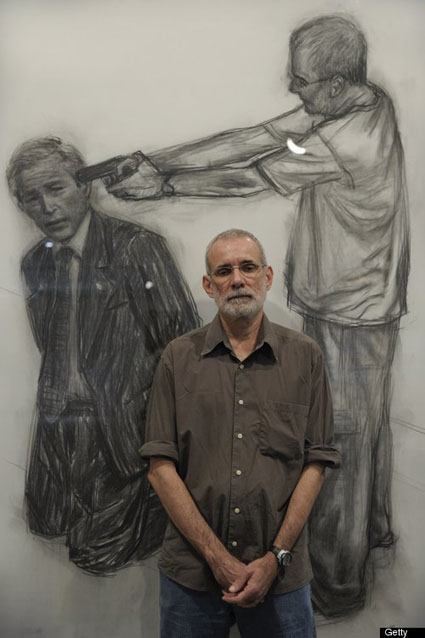In a noble effort to assure the ethical use of AI in legal matters, the European Commission for the Efficiency of Justice (CEPEJ) of the Council of Europe is catching up with Joey Skaggs’ visionary 1995 Solomon Project hoax. h/t Miso.
“Council of Europe adopts first European Ethical Charter on the use of artificial intelligence in judicial systems”
by Newsroom staff
Council of Europe
April 12, 2018
 The European Commission for the Efficiency of Justice (CEPEJ) of the Council of Europe has adopted the first European text setting out ethical principles relating to the use of artificial intelligence (AI) in judicial systems.
The European Commission for the Efficiency of Justice (CEPEJ) of the Council of Europe has adopted the first European text setting out ethical principles relating to the use of artificial intelligence (AI) in judicial systems.
The Charter provides a framework of principles that can guide policy makers, legislators and justice professionals when they grapple with the rapid development of AI in national judicial processes.
The CEPEJ’s view as set out in the Charter is that the application of AI in the field of justice can contribute to improve the efficiency and quality and must be implemented in a responsible manner which complies with the fundamental rights guaranteed in particular in the European Convention on Human Rights (ECHR) and the Council of Europe Convention on the Protection of Personal Data. For the CEPEJ, it is essential to ensure that AI remains a tool in the service of the general interest and that its use respects individual rights.
The CEPEJ has identified the following core principles to be respected in the field of AI and justice:
- Principle of respect of fundamental rights: ensuring that the design and implementation of artificial intelligence tools and services are compatible with fundamental rights;
- Principle of non-discrimination: specifically preventing the development or intensification of any discrimination between individuals or groups of individuals;
- Principle of quality and security: with regard to the processing of judicial decisions and data, using certified sources and intangible data with models conceived in a multi-disciplinary manner, in a secure technological environment;
- Principle of transparency, impartiality and fairness: making data processing methods accessible and understandable, authorising external audits;
- Principle “under user control”: precluding a prescriptive approach and ensuring that users are informed actors and in control of their choices.
For the CEPEJ, compliance with these principles must be ensured in the processing of judicial decisions and data by algorithms and in the use made of them. Read more.



